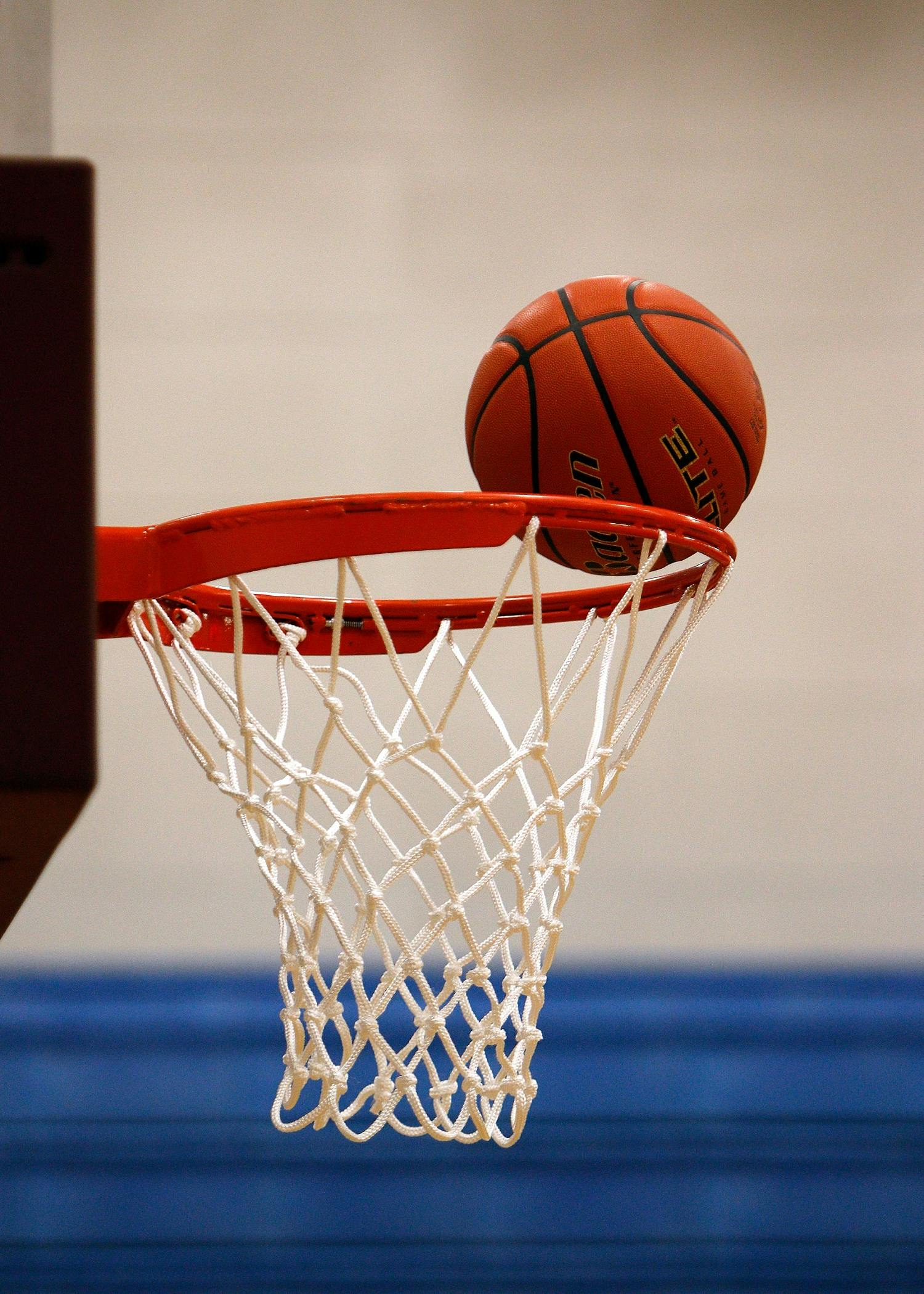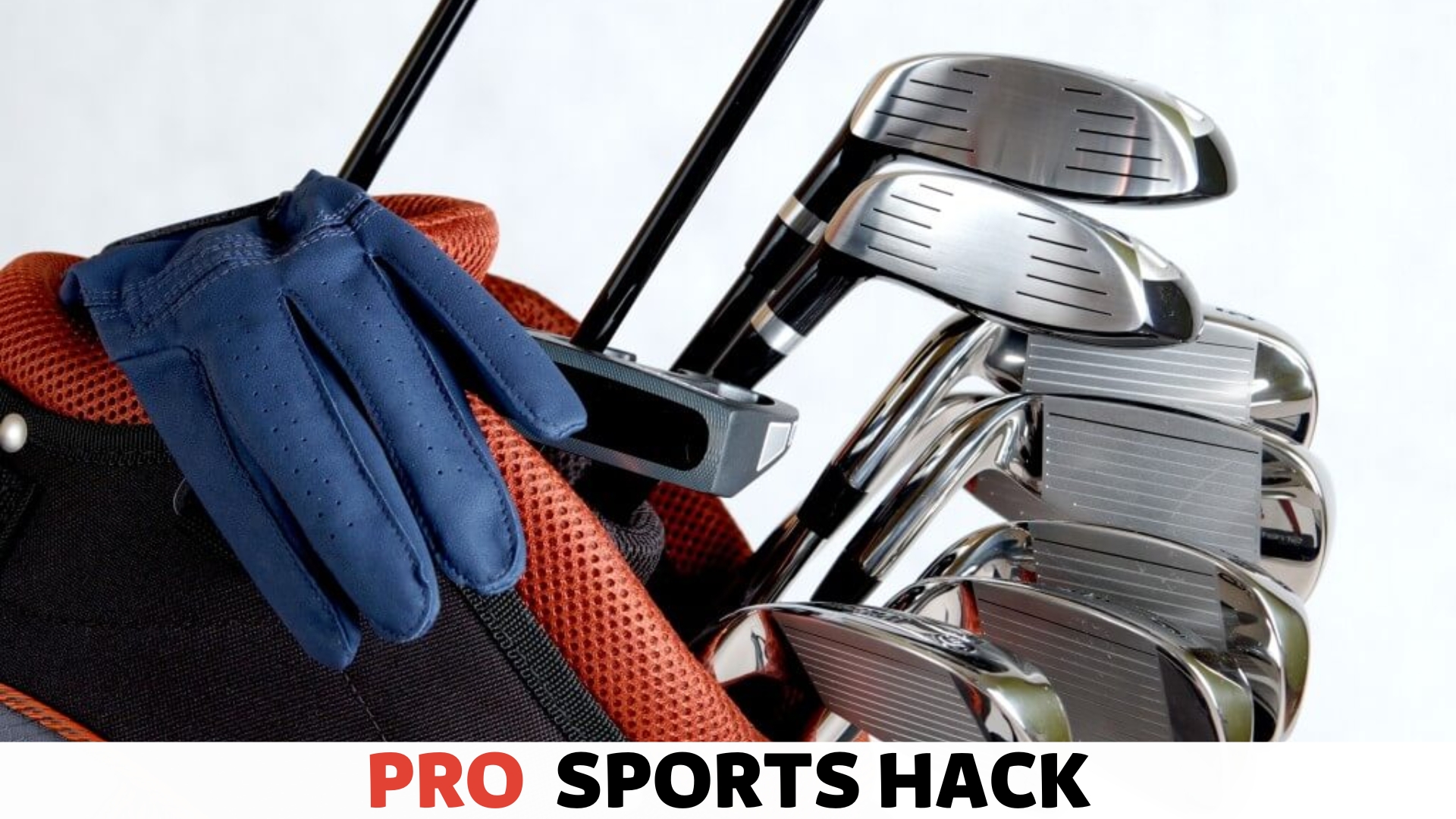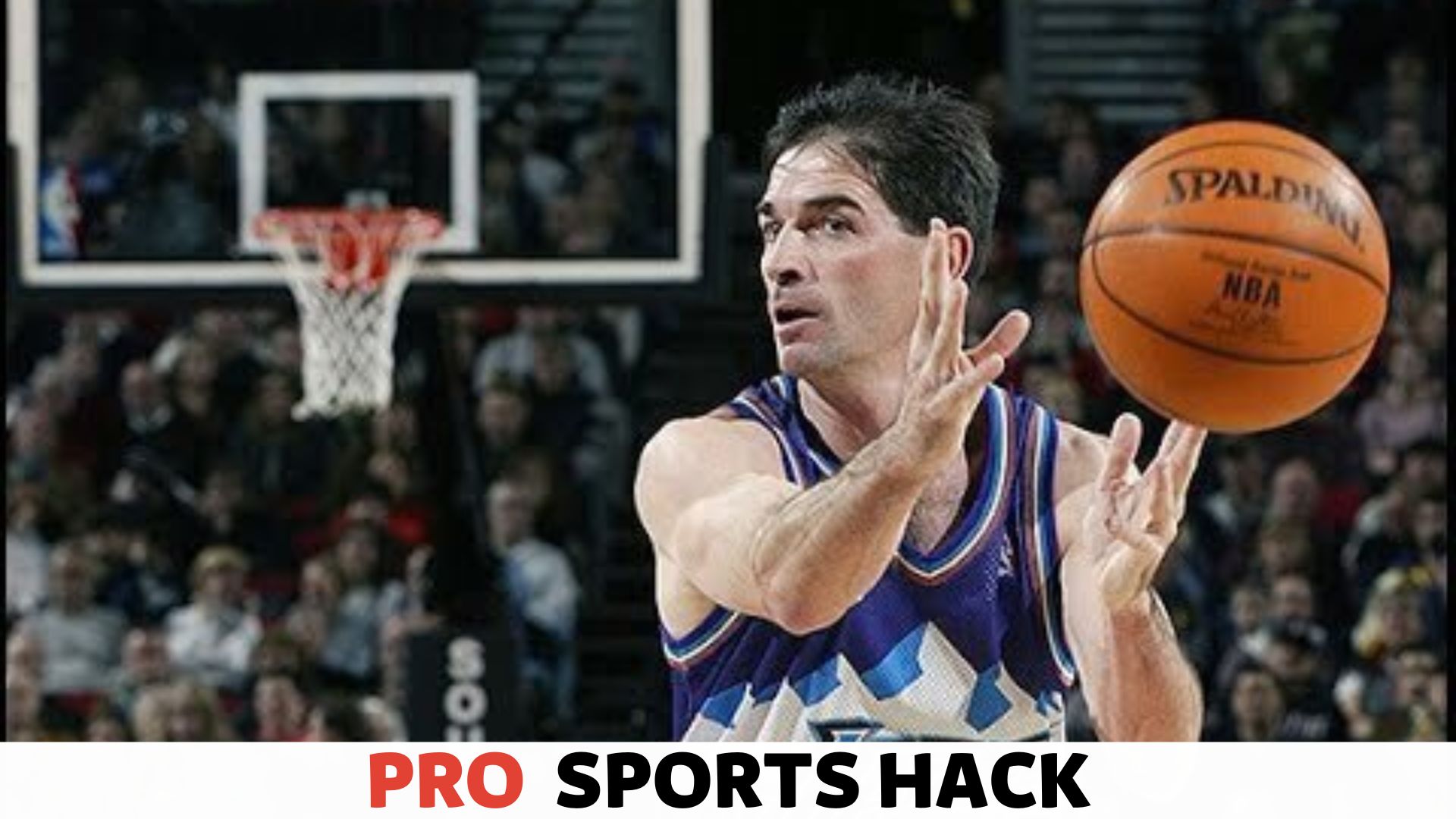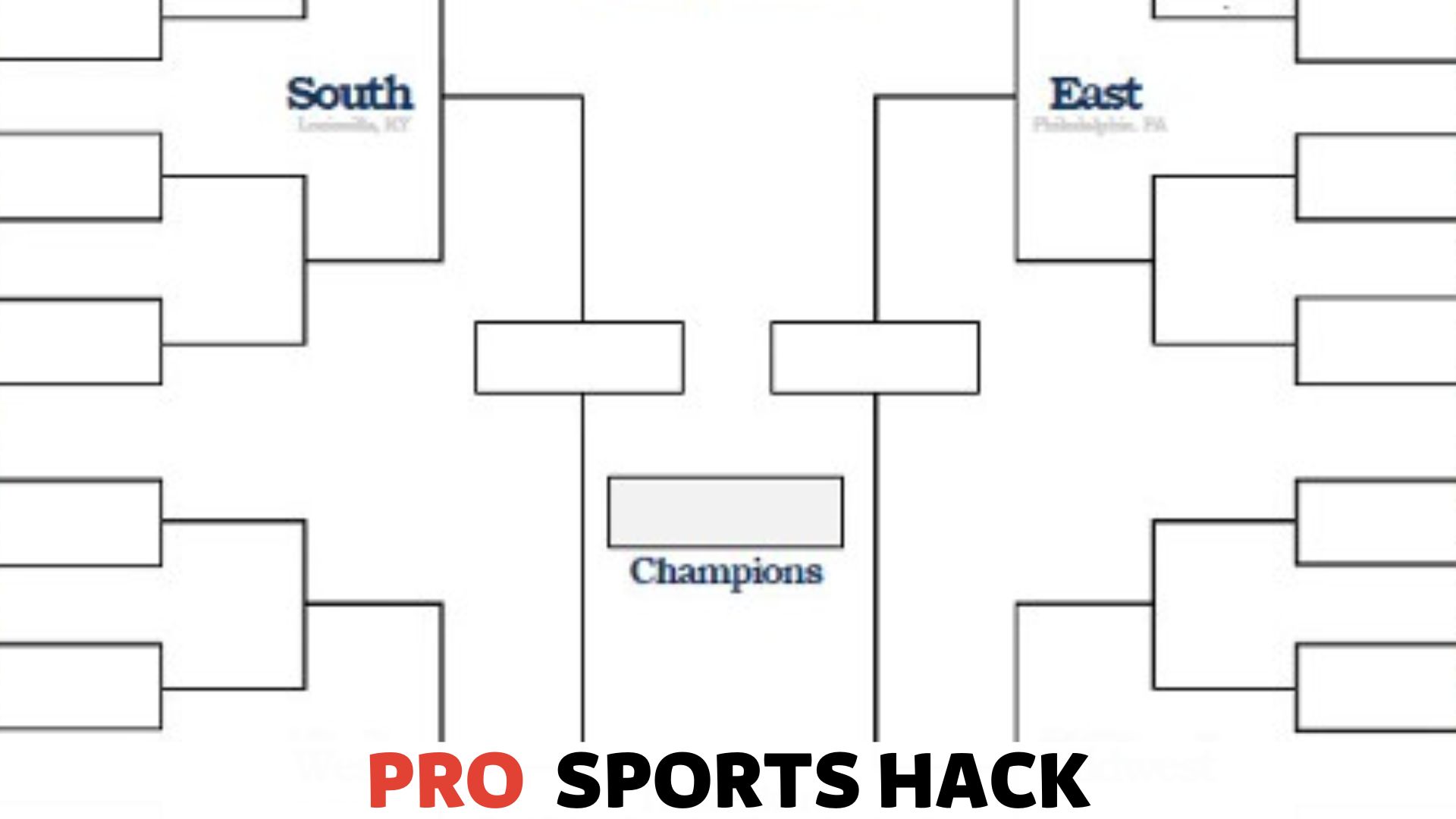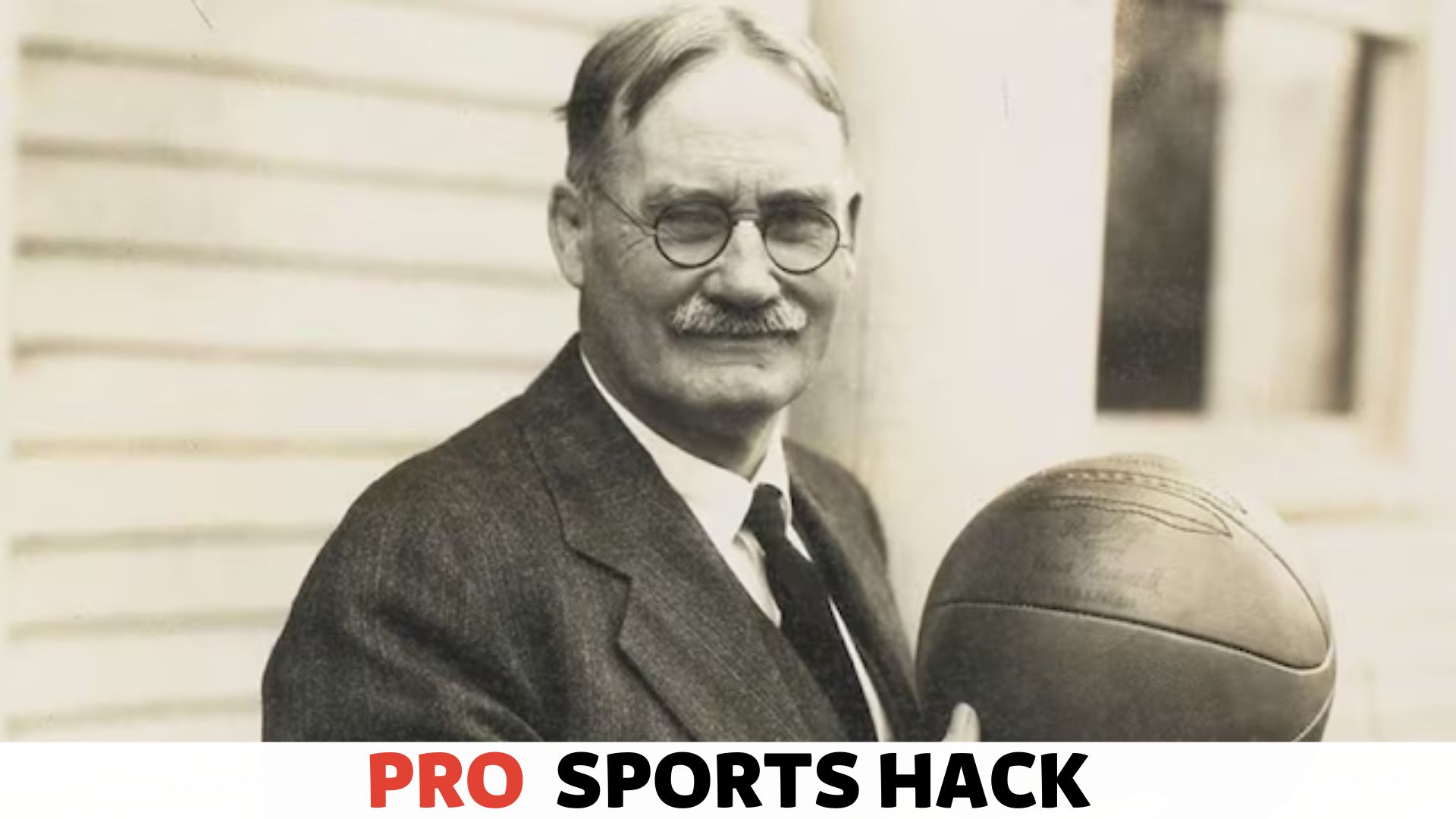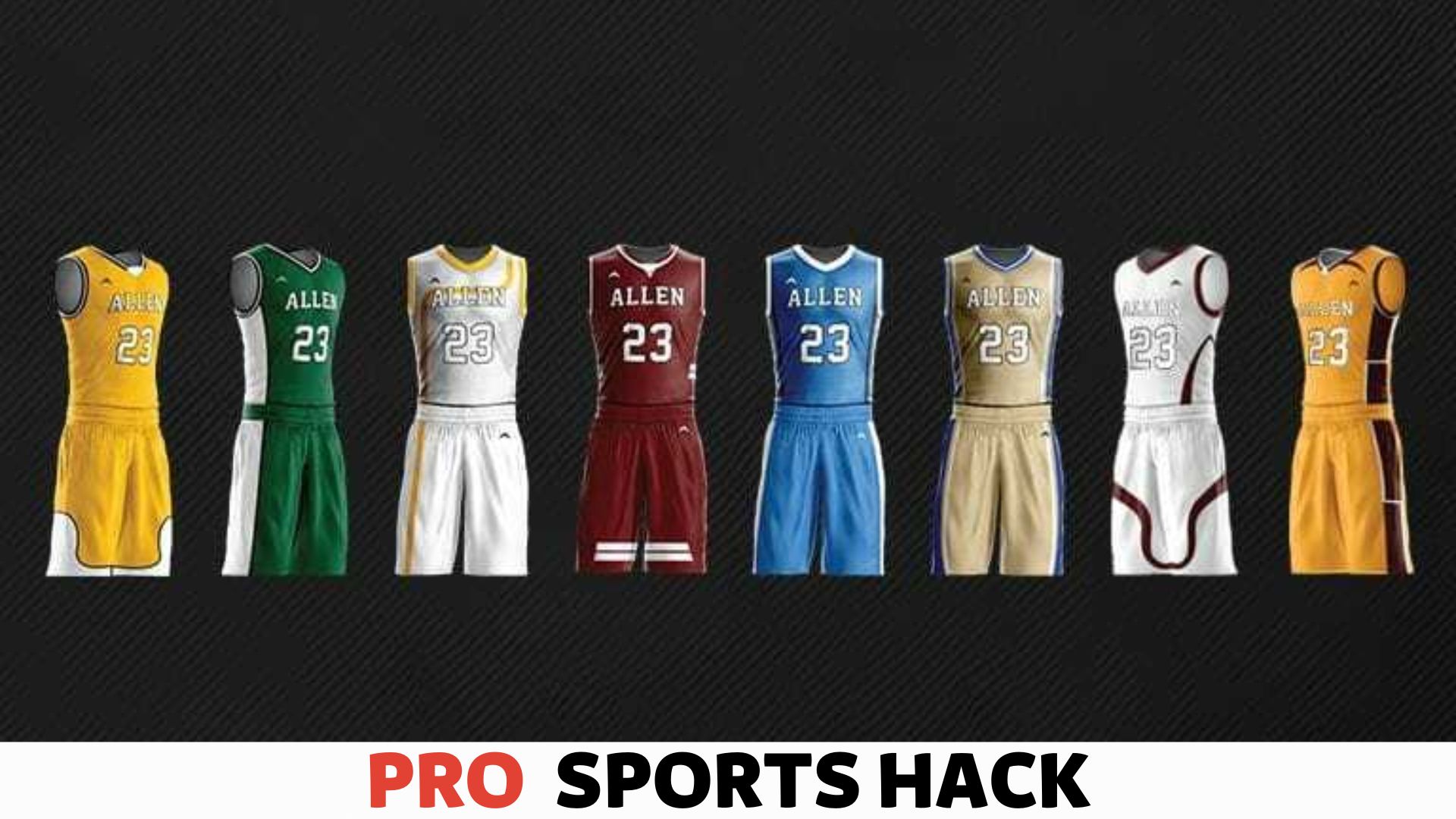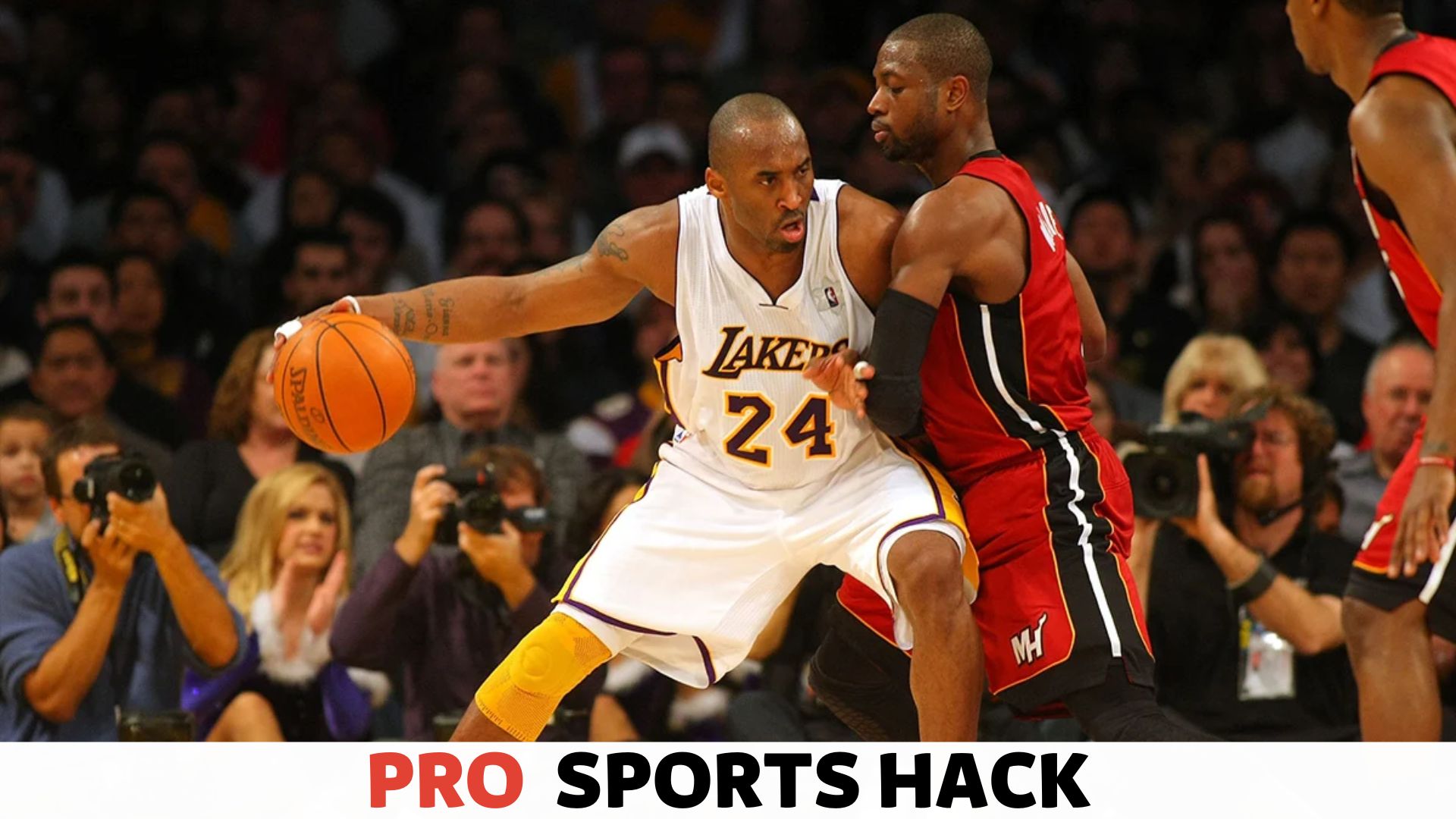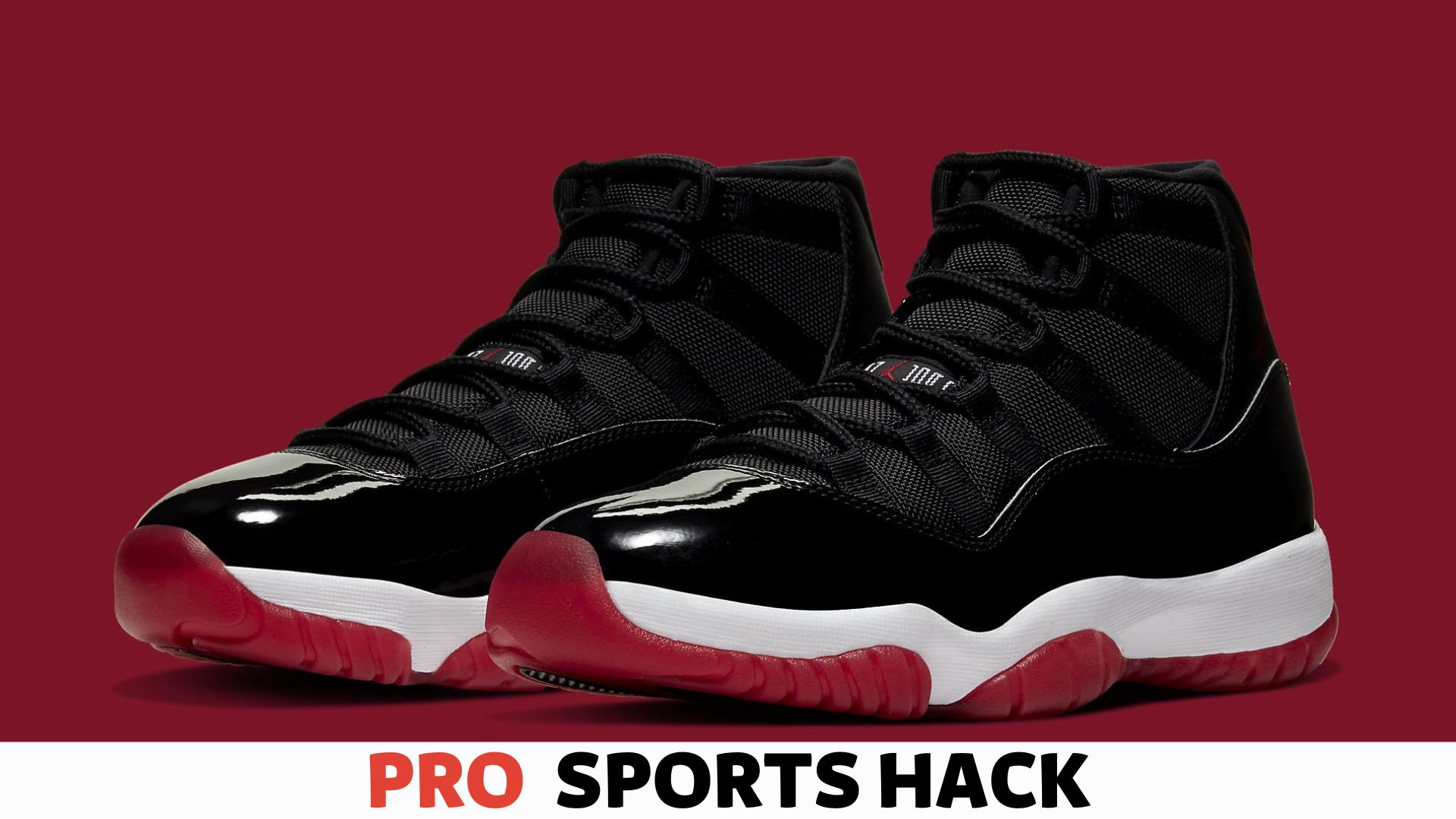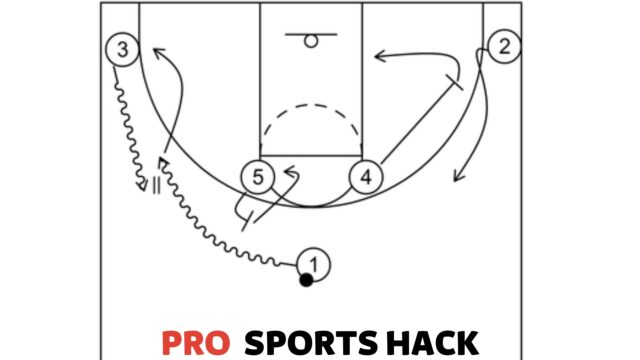
The flare cut in basketball is a sharp movement towards the perimeter, away from the ball. It is often used to create space for a jump shot.
Basketball players frequently utilize the flare cut to get open by moving away from the ball towards the three-point line or the baseline, creating separation from their defender.
This offensive move allows the player to receive a pass for an open shot or to attack the basket.
Effective execution of the flare cut requires precise timing, quick footwork, and good communication with teammates. Coaches often incorporate the flare cut into their offensive strategies as it can effectively create scoring opportunities.
This maneuver is commonly utilized at all levels of basketball, from youth leagues to professional games.
Understanding the Flare Cut in Basketball
The flare cut is an essential basketball move that every player should understand and master. It is a powerful offensive tactic that can create scoring opportunities for the cutter and the rest of the team.
In this section, we will delve into the mechanics of the flare cut, including footwork, body positioning, reading the defense, and creating separation.
The Flare Cut Defined
Before diving into the details, let’s define a flare cut in basketball. A flare cut is a strategic move where an offensive player starts by setting a screen, usually near the perimeter.
It then quickly changes direction, moving away from the screen to the open area on the court.
This change of direction catches the defender off guard and creates space for a catch-and-shoot opportunity or a drive to the basket.
Flare Cut Mechanics
To execute a successful flare cut, certain mechanics need to be employed. Let’s discuss these mechanics in more detail:
- Footwork: A proper footwork technique is crucial in performing a flare cut. The offensive player must quickly pivot on the inside foot and push off the outside to create an explosive movement away from the screen.
- Body Positioning: Maintaining a low stance and having your body facing the passer is essential. This positioning allows for quick acceleration and better balance during the cut.
Reading the Defense
One of the keys to a successful flare cut is the ability to read the defense. Identifying how the defender guards the screen and adjusting your cut is important. Some things to consider when reading the defense are:
- Defender’s Position: Is the defender playing tight or giving space?
- Screen Communication: Are your teammate and you on the same page regarding the timing and direction of the screen?
- Defender’s Reaction: Does the defender react quickly or get caught off guard?
Creating Separation
The ultimate goal of a flare cut is to create separation from the defender. To achieve this, there are a few techniques to keep in mind:
- Change of Direction: As you move away from the screen, be sudden and explosive to catch the defender off balance.
- Using Screens: Utilize screens effectively to create additional space between you and the defender.
Mastering the flare cut can take time and practice, but understanding the fundamentals and mechanics will greatly improve your offensive game.
Incorporating this tactic into your arsenal will create opportunities for yourself and open up scoring options for your teammates. Now that we understand the flare cut, let’s discuss other crucial aspects of basketball!
Benefits of the Flare Cut
In basketball, executing effective offensive plays is essential for success on the court. One such play that can significantly benefit the team is the Flare Cut.
The Flare Cut is a strategic movement that involves the offensive player quickly moving away from the ball and towards the perimeter, creating numerous advantages for the team.
In this section, we will delve into the various benefits of the Flare Cut, which include creating space for open shots, drawing defensive attention away, and opening up opportunities for teammate involvement.
Creating Space for Open Shots
The Flare Cut is an excellent way to create space for open shots. By quickly moving towards the perimeter, the offensive player forces the defender to follow them closely or risk leaving them open.
This split-second decision-making often leads to defensive confusion and miscommunication, leaving the offensive player room to receive a pass and take an uncontested shot.
Additionally, the Flare Cut can lead to pick-and-roll opportunities if the defender tries to switch onto the offensive player, enabling the offense to exploit mismatches and create even more open shots.
Drawing Defensive Attention Away
The Flare Cut is an effective strategy for drawing defensive attention away from the play and towards the offensive player executing the cut.
As the offensive player moves toward the perimeter, the defender must react and help the defense. This makes it harder for the defender to guard the ball-handler, opens up passing lanes, and creates opportunities for teammates.
The Flare Cut allows the offense to exploit the resulting gaps and create scoring opportunities by diverting the defense’s attention.
Opening Up Opportunities for Teammate Involvement
Another significant benefit of the Flare Cut is its ability to open up opportunities for teammate involvement. As the offensive player executes the cut, it creates a domino effect on the defense.
Defenders are often forced to adjust their positioning and rotation, leaving other offensive players with favorable matchups or open passing lanes.
This allows the offense to keep the defense on their toes and forces them to make split-second decisions. When executed correctly, the Flare Cut creates scoring opportunities for the cutter and enables other teammates to get involved in the play, fostering team synergy and improving overall offensive efficiency.
Implementing Flare Cuts in Offensive Strategies
The flare cut is a versatile offensive strategy that can be incorporated into various offensive situations to create scoring opportunities. By flare cuts, teams can create space effectively, open up passing lanes, and keep the defense guessing.
In this section, we will explore three ways to implement flare cuts in offensive strategies: incorporating flare cuts in set plays, using flare cuts in pick-and-roll situations, and utilizing flare cuts in the fast-break offense.
Incorporating Flare Cuts in Set Plays
Using them in set plays is one effective way to incorporate flare cuts into offensive strategies. Set plays are designed sequences of movements and actions teams use to create scoring opportunities.
By incorporating flare cuts in set plays, teams can catch the defense off guard and create open-shot opportunities. Here are a few key points to consider when incorporating flare cuts in set plays:
- Start the play with a flare cut: Begin the set by having a wing player perform a flare cut towards the corner. This will create separation from the defender and create an open passing lane.
- Read the defense: As the flare cut is being executed, the other players on the court should be reading the defense and reacting accordingly. This can include setting screens, cutting to the basket, or relocating to open spaces.
- Utilize misdirection: Incorporate misdirection into the set play by having a player fake a flare cut before quickly changing direction and cutting to a different court area. This can confuse the defense and create scoring opportunities.
Using Flare Cuts in Pick and Roll Situations
The pick and roll is a fundamental offensive strategy that involves one player setting a screen for the ball handler, who then uses the screen to create scoring opportunities.
By incorporating flare cuts in pick-and-roll situations, teams can add a layer of complexity to their offense. Here’s how to effectively use flare cuts in pick-and-roll situations:
- Set the screen: Begin the pick-and-roll situation with a player setting a screen for the ball handler. The screener’s defender will often hedge or switch to impede the ball handler’s progress.
- Flare cut option: As the ball handler uses the screen, one of the other offensive players should perform a flare cut to create space and draw the attention of the screener’s defender. This opens up passing and scoring options for the ball handler.
- Read and react: The ball handler and the flare-cut player should read the defense and react accordingly. If the screener’s defender stays with the ball handler, the player performing the flare cut can pop out for an open jump shot. If the defender switches onto the ball handler, the flare-cut player can roll to the basket for a potential lob or finish at the rim.
Utilizing Flare Cuts in Fast Break Offense
Fast break offense is about quick transitions and exploiting the defense’s lack of organization. By incorporating flare cuts in fast-break offense, teams can create confusion and open up scoring opportunities.
Here’s how to effectively utilize flare cuts in fast break offense:
- Push the pace: It’s crucial to push the pace and catch the defense off guard in fast break situations. This forces the defense to scramble and creates open passing lanes.
- Flare cut timing: As the ball handler approaches the half-court, one of the other offensive players should perform a flare cut to create separation from the defender and create an open passing lane.
- Quick decision-making: In fast-break offense, quick decision-making is essential. The ball handler should read the defense and make the pass to the player performing the flare cut if they are open. If not, the ball handler should continue attacking the rim or look for other open teammates.
Flare cuts in offensive strategies can significantly enhance a team’s scoring potential.
By incorporating flare cuts in set plays, pick-and-roll situations, and fast-break offense, teams can create confusion, open up passing lanes, and generate scoring opportunities. Use these strategies to keep the defense guessing and maximize offensive efficiency.
Flare Cut Techniques and Variations
The flare cut is an effective basketball technique to create space and open scoring opportunities. It involves a player quickly changing direction by cutting away from the ball and then sprinting towards it in a different location on the court.
This deceptive movement often catches defenders off guard, allowing the player to receive a pass, take a shot, or make a play. There are several variations of the flare cut, each with its own execution, timing, and tips for success.
In this section, we will explore the V-cut flare, L-cut flare, and S-cut flare, providing insights into how to perform each move and achieve optimal results effectively.
V-Cut Flare
Execution and Timing
The V-cut flare is a fundamental technique that involves creating separation from the defender by making a sharp diagonal cut away from the basketball and then sprinting toward the ball.
To execute a V-cut flare effectively, follow these steps:
- Start by positioning yourself a few feet away from the defender.
- Plant your outside foot firmly while leaning slightly towards the defender.
- Explode off your outside foot, making a quick diagonal cut away from the basketball.
- Sprint towards the ball, creating space between you and the defender.
Tips for Effective V-Cut Flares
- Keep your movements explosive and efficient, using your body to shield the defender from reaching the ball.
- Use your eyes and body to deceive the defender, making them believe you are going one way before quickly cutting in the opposite direction.
- Communicate effectively with your teammates, letting them know when you are making a V-cut flare so they can time their passes accordingly.
- Practice V-cut flares at game-like speed to improve your ability to execute them successfully during gameplay.
L-Cut Flare
Execution and Timing
The L-cut flare is a variation of the flare cut that involves making two sharp cuts to create space away from the defender. Here’s how to execute an L-cut flare:
- Start by positioning yourself a few feet away from the defender, facing the basketball.
- Plant your outside foot firmly and quickly cut towards the baseline, forming the first part of the “L” shape.
- Immediately after the baseline cut, push off your outside foot and make a second cut towards the wing or corner, forming the second part of the “L” shape.
- Sprint towards the ball, separating from the defender and positioning yourself for a pass.
Tips for Effective L-Cut Flares
- Stay low and maintain balance throughout the L-cut flare, enabling quick direction changes.
- Use your body to shield the defender from reaching the ball, especially during the second cut of the L shape.
- Timing is crucial in executing L-cut flares, so practice coordination with your teammates to ensure smooth execution.
- Master the footwork required for L-cut flares, as this will greatly enhance your ability to create separation from defenders.
S-Cut Flare
Execution and Timing
The S-cut flare is a more advanced variation of the flare cut that involves making multiple sharp cuts in the shape of an “S” to confuse defenders and create space. To execute an S-cut flare:
- Start by positioning yourself a few feet away from the defender, facing the basketball.
- Plant your outside foot and quickly cut towards the wing, forming the first part of the “S” shape.
- Immediately after the wing cut, change direction and cut the baseline, forming the second part of the “S” shape.
- Finally, sprint towards the ball, separating from the defender and positioning yourself for a pass.
Tips for Effective S-Cut Flares
- Focus on maintaining balance and agility throughout the S-cut flare, as this will allow you to change directions quickly and confuse defenders.
- Utilize your body and deceptive movements to create uncertainty in the defender’s mind, making it harder for them to anticipate your cuts.
- Develop good court awareness and communication skills, as teammates need to recognize and react to your S-cut flare to deliver accurate passes.
- Practice S-cut flares with precision and at game-like speed to enhance your ability to execute them effectively during competitive play.
Developing Flare Cut Skills and Fundamentals
The flare cut is a crucial offensive basketball move that helps players create separation from their defenders, open up passing lanes, and provide scoring opportunities.
To master the flare cut, focusing on developing key skills and understanding the fundamentals is essential.
In this section, we will explore the important aspects of flare cuts and discuss how players can improve their performance through proper footwork and balance, cutting techniques, control, deceleration, utilizing body fakes, and maintaining court awareness.
Footwork and Balance
Strong footwork and balance are essential for executing effective flare cuts. Proper positioning and weight transfer during the cut can make all the difference in gaining separation from defenders.
Some key footwork and balance techniques to focus on include:
- Starting with a balanced stance, with feet shoulder-width apart and knees slightly bent
- Exploding off the inside foot while maintaining a low center of gravity
- Pivoting on the outside foot to change direction quickly and efficiently
- Using quick and controlled steps to maintain balance throughout the cut
Proper Cutting Techniques
A successful flare cut requires proper cutting techniques to deceive the defender and create space. It’s crucial to:
- Read the defense and anticipate the positioning of the defender
- Use angled cuts to exploit defensive vulnerabilities
- Make sharp and explosive cuts to create separation
- Use the inside foot to push off and change direction quickly
Control and Deceleration
Control and deceleration are vital for executing a flare cut with precision. Stopping quickly and balancing yourself after the cut ensures you can receive a pass or make the next move.
Some tips for developing control and deceleration skills are:
- Focusing on proper weight distribution and body control.
- Practicing sudden stops and starts to improve deceleration ability.
- Using controlled body movements to minimize momentum and maintain balance.
Utilizing Body Fakes
Body fakes are effective tools for deceiving defenders and gaining an advantage in a flare cut. You can create space in the opposite direction by using your body to fake one direction.
To maximize the effectiveness of body fakes, consider these strategies:
- Using head and shoulder movements to sell the fake.
- Faking with the inside foot while preparing to explode in the opposite direction.
- Maintaining upper body balance and coordination during the fake.
Maintaining Court Awareness
Maintaining court awareness is crucial for successfully executing flare cuts. By continuously scanning the court, you can anticipate opportunities for open space and adjust your cuts accordingly.
Some ways to improve court awareness include:
- Keep your head up and your eyes focused on the movement of teammates and defenders.
- Anticipating passing angles and available spaces on the court.
- Exploiting gaps in the defense by adjusting your cuts in real time.
By developing these crucial skills and understanding the fundamentals, you can enhance your flare-cut abilities and become a more effective offensive player.
Practice these techniques diligently and apply them in game situations to take your flare cuts to the next level!
Key Considerations for Successful Flare Cuts
Flare cuts are highly effective offensive moves in basketball, allowing players to gain valuable space for open shots or driving lanes. To execute flare cuts successfully, players must consider various factors that can enhance their effectiveness.
In this section, we will explore three key considerations for successful flare cuts: communication with teammates, timing, and spacing, and recognizing defensive adjustments.
Communication With Teammates
Effective communication is crucial for successful flare cuts. Players must effectively communicate with their teammates to ensure the cut is timed properly and the necessary space is created.
Clear and concise communication can be achieved through verbal calls or nonverbal cues.
Verbal calls: Players should use specific and concise terms to communicate their intentions to their teammates. For example, the player performing the flare cut can shout “flare!” or “screen and flare!” to inform the ball handler of their planned move.
Nonverbal cues: Players can also use nonverbal communication to signal their intent. This can include hand signals, eye contact, or specific movements that indicate the upcoming flare cut.
By establishing effective communication channels, players can improve the timing and execution of the flare cut.
Timing and Spacing
The timing and spacing of a flare cut are crucial for its success. A well-timed cut can catch the defense and create open scoring opportunities.
Similarly, proper spacing between the cutter and the ball handler allows for effective passing and prevents defensive traps.
Timing: The cutter should time their movement to coincide with the ball handler’s decision-making process. This requires anticipation and quick reactions to create the necessary separation.
The cutter should initiate their move just as the ball handler starts to drive or make a pass, catching the defense off balance.
Spacing: The cutter should maintain an appropriate distance from the ball handler to create passing angles and prevent defensive interference.
It’s too close, and the defenders can easily switch or trap the cutter. The passing window becomes difficult or impossible to execute if it is too far.
Recognizing Defensive Adjustments
Awareness of defensive adjustments is vital to counter the opponent’s strategies and maintain the effectiveness of flare cuts. Defenses may employ various tactics to disrupt the flare cut, such as switching defenders or sending help defenders.
Switching defenders: When the defense switches defenders, the cutter must quickly adapt and exploit potential mismatches. This requires good court awareness and understanding of individual matchups.
Help defenders: When help defenders rotate to guard against the flare cut, the cutter should recognize this and adjust their movement accordingly.
This adjustment could involve changing direction, delaying the cut, or relocating to another spot to maintain an advantageous position.
By recognizing and adapting to defensive adjustments, players can preserve the effectiveness of flare cuts and continue to create scoring opportunities.
Defending Against Flare Cuts
The flare cut is a common offensive move in basketball that requires the defending team to have effective defensive strategies to prevent the offense from gaining an advantage.
Defending against flare cuts is crucial for any defensive player or team. In this section, we will explore various defensive strategies and techniques that can be utilized to defend against flare cuts effectively.
Understanding the Flare Cut Defense
Before diving into the defensive strategies against flare cuts, it is important to clearly understand the flare cut and how it can be defended against.
A flare cut occurs when an offensive player moves from the ball toward the sideline or baseline to create space for a potential pass or shot.
Defending against the flare cut is to deny the offensive player the opportunity to receive a pass or take a shot.
Utilizing Defensive Strategies
Several defensive strategies can be employed to defend against flare cuts effectively:
- Switching and Communication: Switching is a common defensive strategy that involves players switching defensive assignments seamlessly to guard against flare cuts. Effective communication among teammates is crucial to ensure smooth switches and prevent offensive players from gaining an advantage.
- Chasing the Cutter: Chasing the cutter involves closely guarding the offensive player attempting the flare cut. This requires quick footwork, anticipation, and physicality to prevent the offensive player from creating separation.
- Denying the Passing Lane: Denying the passing lane is another effective defensive strategy against flare cuts. This involves positioning oneself in a way that makes it difficult for the passer to complete the pass to the cutter. It requires anticipation, quick reactions, and active hands.
Switching and Communication
Switching defensive assignments is a valuable defensive strategy to counter flare cuts.
By switching defenders, the offensive player attempting the flare cut will be met with a different defender, making it more challenging for them to receive a pass.
Effective communication among teammates is crucial to coordinate these switches. This communication can be verbal or non-verbal, such as hand signals or eye contact, ensuring that each defensive player knows when and who to switch to defend against the flare cut.
Chasing the Cutter
Chasing the cutter is an aggressive defensive technique to prevent the offensive player attempting the flare cut from gaining separation.
This entails closely tracking the cutter’s movements, staying as close as possible to deny them the opportunity to receive a pass or shoot.
Chasing the cutter requires quick footwork, anticipation, and physicality to disrupt their timing and prevent them from executing the flare cut successfully.
Denying the Passing Lane
Denying the passing lane is a defensive strategy that aims to disrupt the offensive team’s ability to complete a pass to the cutter.
By effectively positioning oneself between the passer and the cutter, the defensive player can obstruct the passing lane, making it difficult for the passer to deliver an accurate pass.
Anticipation, quick reactions, and active hand movements are key components of denying the passing lane successfully.
Enhancing Defensive Techniques Against Flare Cuts
Flare cuts are a common offensive strategy in basketball where a player moves quickly away from the ball handler to gain separation and receive a pass on the perimeter.
Defending against flare cuts can be challenging, but by anticipating the cut, applying pressure on the cutter, and recovering and contesting shots effectively, defenders can greatly enhance their defensive techniques and disrupt the opponent’s offense.
Anticipating the Flare Cut
Anticipating the flare cut is crucial for defenders to defend against it successfully. By reading the cues and movements of the offensive players, defenders can position themselves in a way that allows them to cut off the intended passing lane.
Here are some tips to anticipate a flare cut:
- Watch the eyes of the ball handler to recognize potential flare-cut movements.
- Keep an eye on the positioning of the offensive player, looking for signs they are preparing to make a flare cut.
- Study the tendencies of the offensive player to gain insight into their preferred moves.
Applying Pressure on the Cutter
Once the defender anticipates the flare cut, applying pressure on the cutter is essential to disrupt their timing and prevent an easy pass reception.
Applying pressure can make it difficult for the cutter to get into their desired position or make a clean catch. Here are some techniques to apply pressure on the cutter:
- Use active hands and arms to deny the passing lane and pressure the cutter’s catch hand.
- Maintain tight spacing and stay on the hip of the cutter to limit their options on the catch.
- Communicate with teammates to ensure proper help defense and switch assignments if necessary.
Recovering and Contesting Shots
After successfully defending against the flare cut, defenders must quickly recover and contest any possible shots or passes.
Recovering and contesting effectively can make it difficult for the offensive player to get a clean look at the basket or make a precise pass. Here are some tips for recovering and contesting shots:
- Sprint back to the defensive position as soon as the flare cut is defended, maintaining active footwork and balance.
- Maintain a vision of the ball and the offensive player to anticipate any potential pass or shot.
- Close out with high hands, getting into a low defensive stance to apply pressure and contest the shot.
By implementing these defensive techniques, defenders can improve their ability to defend against flare cuts, making it more challenging for the offense to execute the play effectively.
Anticipating the cut, applying pressure on the cutter, and recovering and contesting shots are all crucial aspects of successfully defending against the flare cut strategy in basketball.
Implementing Flare Cuts in Practice and Training
Flare cuts are an essential component of any basketball team’s offensive strategy. They provide a dynamic way to create open shots and scoring opportunities.
To truly excel in implementing flare cuts, it is crucial to incorporate them effectively in practice and training sessions.
By focusing on drills that develop proper technique, utilizing simulations and repetitions, and creating game-like scenarios, teams can significantly improve their execution of flare cuts.
Incorporating Flare Cuts in Drills
To master flare cuts, teams must focus on incorporating them in various drills during practice sessions. Here are some effective examples:
- 1. Flare Cut Fundamentals: Start with basic drills emphasizing the footwork, timing, and spacing necessary for a successful flare cut. This could include simple cone drills or partner passing exercises gradually increasing complexity.
- 2. Flare Cut and Shoot: Incorporate drills that combine flare cuts with shooting opportunities. This can be done through catch-and-shoot drills from different areas of the court. It helps players learn to read the defense, make quick decisions, and execute precise cuts.
- 3. Flare Cut and Drive: Integrate drills incorporating flare cuts followed by dribble penetration. This will teach players to create scoring opportunities not only for themselves but also for their teammates. It enhances their ability to recognize defensive rotations and make the right play.
Utilizing Simulation and Repetition
To truly ingrain the flare cut technique into players’ muscle memory, it is essential to utilize simulation and repetition during practice.
By recreating game-like scenarios, players can improve their decision-making skills and timing. Here’s how it can be done:
- Defense Simulation: Set up drills where players face live defense while executing flare cuts. This will force them to react to different defensive strategies, adapt their cuts, and make quick reads.
- Repetitions: Emphasize the importance of repetition to develop fluency in executing flare cuts. Encourage players to repeat the movements in a controlled setting, gradually increasing the speed and intensity. This will help them develop muscle memory and improve their overall efficiency.
Game-like Scenarios to Improve Execution
While drills and repetitions are valuable, practicing flare cuts in realistic game-like scenarios is equally important. By creating situations that players are likely to encounter during actual games, they can improve their execution. Consider the following:
- 5-on-5 Scrimmages: Incorporate flare cuts into full-court or half-court scrimmages, allowing players to apply their skills in a game setting. This will help them understand the importance of proper timing, spacing, and communication while executing flare cuts.
- Game-specific Situations: Focus on situations that often require flare cuts, such as when a player receives a double team or the defense switches. By practicing these scenarios, players can develop the ability to make the right flare-cut decision under pressure.
Implementing flare cuts in practice and training is crucial for teams looking to enhance their offensive strategy.
By incorporating flare cuts in drills, utilizing simulation and repetition, and practicing in game-like scenarios, teams can significantly improve their execution and increase their chances of success on the court.
Common Mistakes and How to Avoid Them
When executing the flare-cut basketball move, it’s crucial to understand players’ common mistakes.
By being aware of these errors and knowing how to avoid them, you can enhance your gameplay and elevate your performance on the court.
In this section, we will explore three key mistakes – lack of proper footwork, poor timing and reading of the defense, and insufficient communication with teammates – and provide valuable insights on overcoming these challenges.
Lack of Proper Footwork
One common mistake when executing the flare cut is the lack of proper footwork. Your footwork sets the foundation for executing this move effectively.
Without the correct footwork, you may struggle to create separation from your defender or maintain balance during your cut.
To avoid this mistake, focus on the following footwork fundamentals:
- Start in a triple-threat position, with your feet shoulder-width apart and your knees slightly bent.
- Step out with your inside foot toward your cut, ensuring it is at a 45-degree angle.
- Simultaneously, push off with your outside foot to generate explosive lateral movement.
- Keep your head up, maintain a low center of gravity, and stay balanced throughout the cut.
Poor Timing and Reading of the Defense
Timing and reading the defense are crucial factors in successfully executing the flare cut. A mistimed cut or failure to read the defense can result in missed scoring opportunities or turnovers.
Understanding your defender’s positioning and other defenders’ movements on the court is essential.
Follow these strategies to improve your timing and reading of the defense:
- Anticipate the movement of your defender and choose the right moment to initiate the cut.
- Observe the positioning of other defenders and look for open spaces to exploit.
- Communicate with your teammates to ensure everyone is on the same page, creating better opportunities for successful cuts.
- Be patient and avoid rushing your cut. Stay calm and make decisions based on the actions of the defense.
Insufficient Communication With Teammates
Effective communication with your teammates is vital in executing the flare cut successfully. Lack of communication can lead to confusion, missed passes, and missed opportunities for scoring.
Improve your communication with the following strategies:
- Establish clear signals or verbal cues with your teammates to indicate the initiation of a flare cut.
- Use eye contact to communicate your intentions and ensure your teammates know your movement.
- Engage in constant communication on the court, letting your teammates know when you are open or when they should expect your cut.
- Practice proper timing and spacing with your teammates during drills and scrimmages.
Addressing these common mistakes and implementing the recommended strategies can enhance your performance in executing the flare cut.
Remember to focus on your footwork, improve your timing and reading of the defense, and prioritize effective communication with your teammates. Mastering these elements will give you a competitive edge on the basketball court.
Frequently Asked Questions for Flare Cut Basketball
What Does It Mean to Flare in Basketball?
Flaring in basketball is when a player moves quickly away from the basket towards the sideline or corner, creating space to receive a pass and shoot a three-pointer.
What is a Flare Cut?
A flare cut is a hairstyle that involves adding layers to the ends of the hair to create a bouncy, voluminous look. It is a popular choice to add movement and shape to the hair.
What is Backdoor Cut in Basketball?
A backdoor cut in basketball refers to a sneaky move where the offensive player quickly cuts behind the defender without the ball, aiming to receive a pass near the basket for an easy score. It helps create scoring opportunities by surprise.
What is An Elbow Cut in Basketball?
An elbow cut in basketball is when a player moves quickly toward the free-throw line area. It’s often used to create scoring opportunities or receive a teammate pass. The player can then shoot, drive to the basket, or make a pass to an open teammate.
How is the Flare Cut Used in Basketball Offense?
A: The flare cut is a tactical move in a basketball offense where a player quickly moves away from the ball to create space for a pass and a scoring opportunity.
Conclusion
The flare cut is essential in basketball and can elevate your game and create scoring opportunities. By utilizing this technique, you can effectively create space and outmaneuver defenders.
Remember to master the footwork, timing, and communication with your teammates to maximize the effectiveness of the flare cut fully.
Incorporating this move into your repertoire will make you a more versatile and impactful player on the court. So, start practicing and watch your game reach new heights!




![Cat in the Chrysalis Spoiler: All You Need To Know [Updated] Cat in the Chrysalis Spoiler](https://prosportshack.com/wp-content/uploads/2024/02/Cat-in-the-Chrysalis-Spoiler-100x75.jpg)







